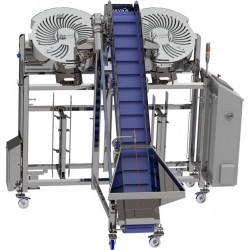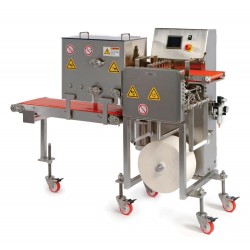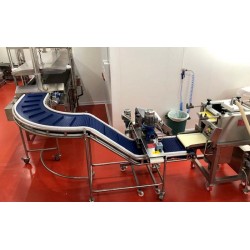
- New
Pneumatic conveying system
Pneumatic conveying as well as modern pneumatic conveying technology are nowadays indispensable for the transport of bulk materials.
Description
Pneumatic conveying as well as modern pneumatic conveying technology are nowadays indispensable for the transport of bulk materials. Time is money and many industrial plants often lose valuable time when loading and unloading vehicles, ships, airplanes or when transferring bulk materials within the production process and further processing. While in the beginning only foodstuffs such as grain were conveyed pneumatically, other branches of industry have now also discovered the many advantages of pneumatic conveying systems for themselves. Hygienic conveying technology has become indispensable in almost all industries such as food, starch/protein, cosmetics, chemicals and pharmaceuticals as well as the plastics industry. Endeco as a plant manufacturer offers all services from A-Z in engineering, consulting, optimization, production and assembly of pneumatic systems and industrial plants using efficient pneumatics and high-quality drives and controls.
A pneumatic system with the right conveyor technology enables the flexible conveying of a wide variety of bulk materials and is used, for example, in the food, chemical and pharmaceutical industries as well as for economical solutions and construction materials.
Pneumatic conveying systems are particularly suitable for:
- Smallest bulk material in dust form like flour or cement
- Larger particles like granules or pellets
- piece goods via pneumatic tube conveyor systems
Mixed conveyed material
The pneumatic conveying (bulk material conveying) is carried out by means of overpressure or vacuum and is specially adapted to your individual requirements. The product feed can be realized among other things via injectors, blow-through sluices, feed shoes or suction troughs. Subsequently, the bulk material is blown through the pipeline with overpressure or sucked in by vacuum. This cost-effective and reliable transport method allows the material to be transported over very long horizontal and vertical distances before it is separated at the end of the conveying pipeline. Thus, industrial plants become much more efficient and also the filling distributed over several halls or parts of buildings is possible without any problems.
100 other products in the same category:
- New

 English
English
 Deutsch
Deutsch
 Français
Français
 Español
Español
 Italiano
Italiano
 Português PT
Português PT






































































































